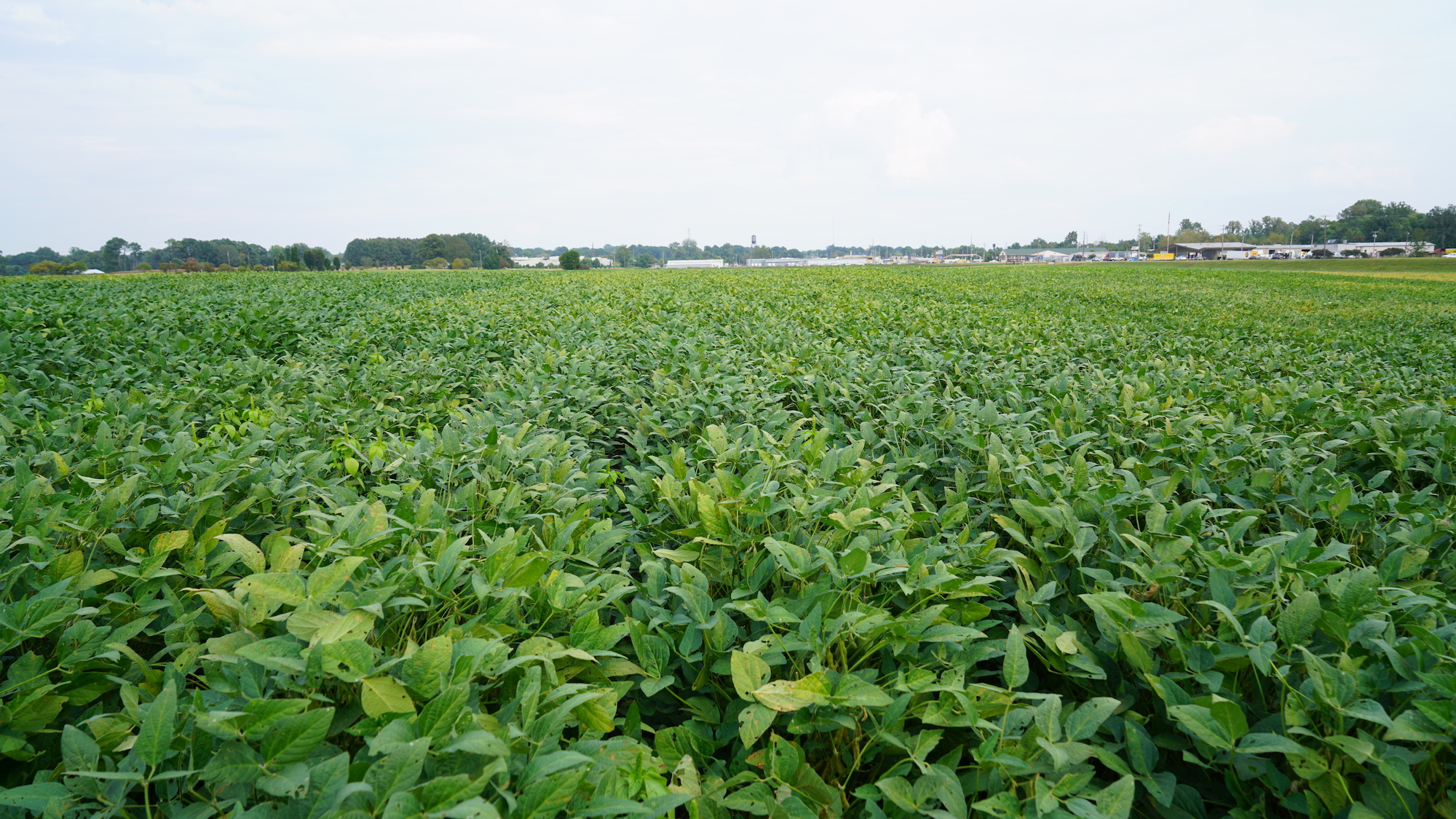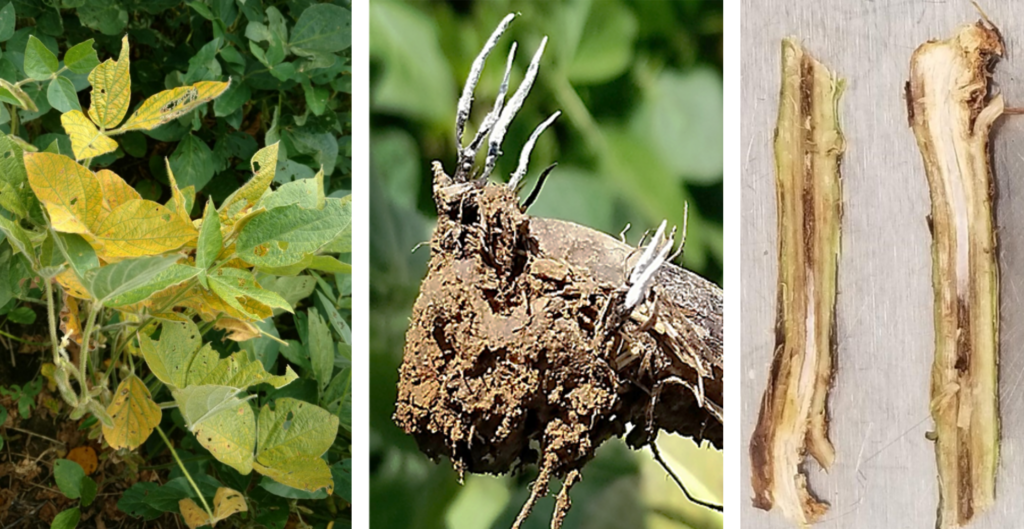
Taproot Decline Poses Threat to Tennessee Soybean Production
KNOXVILLE, Tenn. – Researchers at the University of Tennessee Department of Entomology and Plant Pathology are in their third year of an ongoing study on taproot decline, a disease affecting soybeans. Once a plant is infected by the soil-borne pathogen Xylaria necrophora, severe rotting and deterioration of a soybean’s taproot system will occur, potentially killing the plant and ultimately reducing end-of-season yield.
With little known about management strategies and the disease’s ongoing development, researchers are looking for long-term solutions in addition to studying how the disease might affect both regional agricultural economies and local environmental ecosystems.
Shelly Pate, graduate research assistant and Herbert College of Agriculture PhD candidate in the UT Department of Entomology and Plant Pathology, is conducting research under the advisory of professor Heather Kelly to better understand the impact of taproot decline. “Because taproot decline is an emerging pathogen for our state, researching its effect on plants and other organisms is key to understanding the full extent of its harm on ecosystems throughout the region.”
Taproot decline was first reported in the United States in 2007, although it was not identified in Tennessee until 2017 when it was discovered by University of Tennessee Institute of Agriculture researchers in West Tennessee. Despite causing severe damage to plants, the fungus is often misidentified due to similar symptoms to other soybean diseases such as sudden death syndrome and stem canker. Farmers across Tennessee are asked to scout their fields regularly for signs of taproot decline.
One of the first indications of the disease is foliar symptoms, such as yellow leaves, that begin in the lower canopy of the plant and increase throughout the growing season. Once a field is suspected to be experiencing taproot decline, further analysis should be completed by removing an afflicted plant and inspecting the root system. A common sign includes rotting of the root, which often breaks off at the soil line when the plant is removed. Stromata, also known as dead man’s fingers, are the reproductive structures of the pathogen and are often visible at the base of the plant, potentially even overwintering on leftover crop debris. Farmers should also inspect the inside of the root for signs of taproot decline, splitting it open to check for white fungal growth in the pith and browning of stem tissue. If disease symptoms continue, leaf rotting and eventual plant death will occur.

“It is important that farmers are on the lookout for taproot decline,” says Pate. “Not only is it a very harmful disease that can affect profitability, but our research relies on independent producers throughout the state who keep us up-to-date on the spread of the disease. By working together, we can figure out reliable solutions and protect our state-wide harvest from potential loss.”
Farmers should report all possible cases of taproot decline to their local county Extension office, providing plant samples for testing. To find an Extension office near you, visit utextension.tennessee.edu.
Through its land-grant mission of research, teaching and extension, the University of Tennessee Institute of Agriculture touches lives and provides Real. Life. Solutions. utia.tennessee.edu.